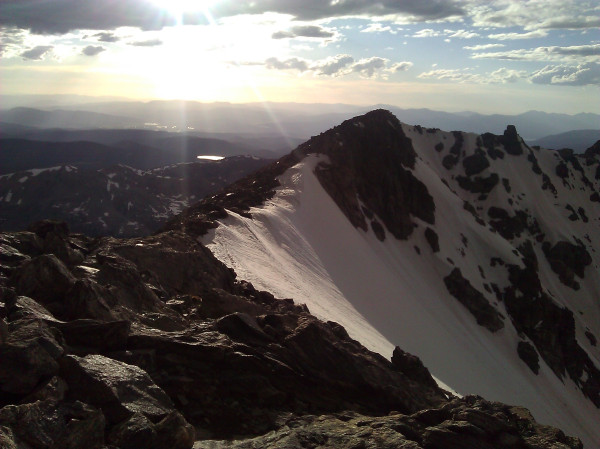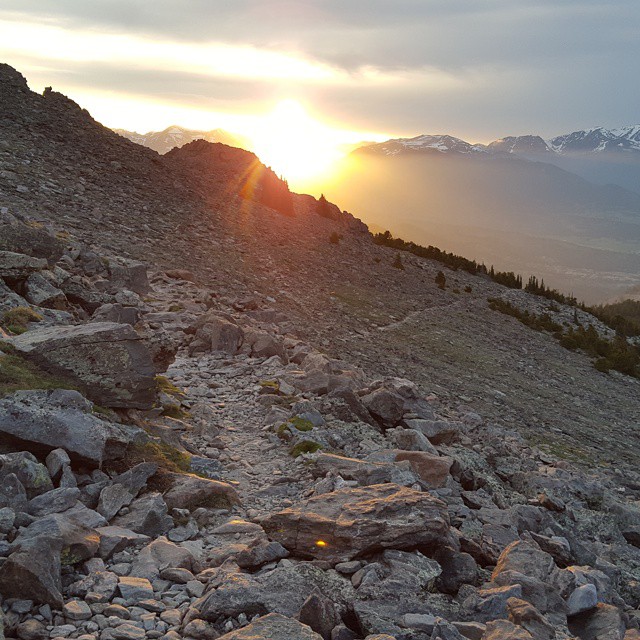Smart phones have, at this point in time, replaced simple point and shoot(non-optical zoom) cameras among the general public.
As this article in PC World points out, though smart phone cameras aren’t quite up to traditional point and shoot standards in some ways (though some smart phones are rapidly narrowing the gap), the convenience, weight and versatility have made a smart phone the preferred device to take vacation photos, share a child’s birthday party or the latest restaurant meal.
And, increasingly, smart devices are being used more and more for outdoor photography.
So, how good are these cameras for outdoor photography?
What I find is that smart phones are wonderful to keep on hand for photos in general. As the old adage goes, the best camera is the one you have available.
With a smart phone camera, I’ve been able to take some good (I think) photos on the fly when a last-minute trip presented itself.

The megapixels have steadily increased..but far more importantly, the lens quality has increased and the size and quality of the sensor has increased well. For example, my Samsung Galaxy S6 has a CMOS sensor size of 1/2.6″ compared to a 1/2.3” sensor for many point and shoot cameras.
What does all this mean?
For the average person who wants to share photos with friends and family and perhaps the occasional 8×10 photo, I can see why a smart phone camera is such a popular item. Convenient, easy to use, easy to share photos.

Add in some basic manual controls and the smart phone camera even works at times for someone like myself who fancies themselves an ardent amateur. 😉

What I have found is that the overall quality of the camera on mobile devices have increased to the point that I don’t think I’d buy another basic point and shoot camera again.
I found the overall quality of my new phone’s camera to be surprisingly good on a recent trip.

It did well on landscape photos and medium shots.


So…will my Android replace my DSLR or my long-drooled after mirrorless camera setup?
Probably not.
Why?
Because here is what I found for me… As always, your results may vary.
- As with many point and shoots, the depth of field control is limited. Macro shots (wildflowers) and portrait type shots or similar do not come out as well.
- Lack of optical zoom means the photos becomes pixelated and noisy when I zoom in
- The smaller sensor, even with a high mega-pixel count, means that the details in the photos will not be as high
- Low light conditions are difficult for the camera as well vs one with a larger sensor
- Battery power will be limited unless I carry something like an Anker box(which, to be fair, does weigh less than my DSLR rig!)
There are ways around these limitations, but still not quite as good versus the dedicated cameras in my humble opinion.
Still, for convenience and having a camera on me, the latest generation of mobile device cameras are quite good.
And, who knows, new technology in the pipeline. New technology that will presumably get better with each year.
However, I think camera gear is much like backpakcking gear. The lightest and better gear can help with backpacking but will not take you up the trail. Having a high-end camera will not mean a person will necessarily take good photos.
Knowing how to use your tools and knowing the limitations of them is what will ultimately let a person take the good photos.
And, again to be fair, if I were not into photography as an adjunct hobby to my outdoor trips, I suspect a smart device camera would be just fine.
A DSLR will take better photos than my current phone…but in the right conditions, my phone can still take good photos when I do not have my DSLR camera on me.



And having a camera on me is the best way to take a good photo. 🙂
Happy Trails!

Mags – Great article. May I assume you don’t utilize video on your outings? Anyway, that last shot of Twin Sisters and the sun. In my limited experience, when I’ve tried to take a picture of a setting sun on the horizon it did unkind things. Is it my iPhone 4 or my (lack of) technique? Or too complicated an answer?
Thanks
JD
PS I remember the year you wrote about your PCT hike and the nudges you gave over-excited writers about the Trail
Thanks! You are correct..I rarely (ever?) shoot video. Not sure about the iPhone 4, but I suspect the smaller sensor of that era of phones did not help. Technique can help compensate for equipment, but the 2010 era phones (ha! seems funny to say that..but so it goes with technology), were probably best for medium length snapshot type photos. Though, the Windows 7 phone was similar and I was lucky enough to get a nice shot from S. Arapaho peak. However, with my current vintage of phone, I suspect the shot would have been better. Or course, if I had… Read more »
This also touches on the new reality of long distance backpacking, that the latest smartphones combine features which replace heavier or redundant gear items, and the current hiker can do more with fewer, lighter items. As a camera alone, phones aren’t especially competitive with high end point and shoots, but when that phone has a great GPS sensor and the capacity for nearly endless maps, guides, podcasts, MP3s, kindle books, a backup flashlight, a backup compass, etc., it becomes a compelling tool to simplify what a hiker carries. I still carry a physical map and compass as a backup, and… Read more »
Good points..but my main focus was on its use as a camera only. As an enthusiastic (or semi-professional????) amateur photographer, I wanted to write from that perspective.
The other uses of a phone? Well that is a different ball of wax. 🙂
https://pmags.com/grassroots-to-organized-the-changing-nature-of-thru-hikes
I agree on that, for the serious or semi-serious photographer even a phone like the LG G4 with OIS and manual controls will be limiting.
For all of the convenience, multiple uses and photographic qualities of a smart phone, I think the biggest downside is very limited battery power. Even with an extra battery pack, you might only have three days of power. It seems to me that a good point and shoot, with extra batteries, will last you much longer and give you more photographic options.
At least in my case, I would take something better than a basic P&S camera for longer trips.
Steve,
You might be surprised what you can get with the right settings. Daytime my phone is in airplane mode with the screen off most of the time. I keep background apps disabled and use a tool called Greenify that shuts down apps that may start without your knowledge. I keep the brightness setting as low as still usable, and use a 10,000 mAh or 16,000 mAh battery pack depending on the trip. I’m comfortable getting 7-10 days between outlets with this setup, which was better than I was expecting.
Newer smartphones should last a week or so shooting photos regularly, as long as they’re in airplane mode and the screen brightness is turned down. I’m not an ardent photographer, and the occasional good shot I get is mostly a matter of lucky lighting conditions. For me a smartphone is perfect for recording my journey.
Like anything, the tools you bring are determined by your trip objectives.
Like anything, the tools you bring are determined by your trip objectives.
Very true. As mentioned, if I did not enjoy photography as a hobby, I suspect the smart phone would be just fine.